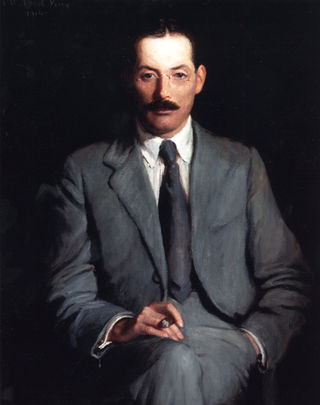Suicide
Can You Tell If Someone Is Suicidal Just by Looking?
Imminent risk of suicide could be predicted by behavioral cues.
Posted June 2, 2018

Whenever Richard Cory went down town,
We people on the pavement looked at him:
He was a gentleman from sole to crown,
Clean favored, and imperially slim.
“Richard Cory,” by Edwin Arlington Robinson
The townspeople whose pulses “fluttered” as they gazed at Richard Cory all wished that they “were in his place.” And why wouldn’t they? After all, he was glittering, graceful, and rich (“yes, richer than a king”), and yet he still exuded a quiet, “human," decency. They must have felt shock, and perhaps even anger or betrayal, when they learned that “one calm summer night,” the subject of their adoration and envy “Went home and put a bullet though his head.” None of them saw it coming.
Perhaps we should pardon the poor townspeople – after all, they are not mental health professionals. But interviews with psychiatrists and psychologists who have lost a patient to suicide reveal a remarkably consistent finding: The suicide of a patient is most often experienced as a shock and a surprise (and can be as emotionally devastating as the death of a close family member). Many doctors acknowledge that, of all the patients they were treating at the time, they would have guessed that some other patient would have been the one to make a fatal suicide attempt.
There are clinical warning signs of suicide that mental health practitioners must be alert to (Joiner, 2014). First (unlike Richard Cory) up to 70% of suicide attempters communicate their intention to die in some way. Suicide attempts are often planned, even rehearsed. The more planning and rehearsal, the more likely the attempt is to be fatal – but also, the more likely there is to be “leakage,” i.e., that someone else will notice what is about to happen and intervene appropriately. Other warning signs include agitation or restlessness, insomnia, and nightmares. Social withdrawal often precedes a suicide attempt, perhaps reflecting the victim’s effort to cut himself off from potential aid. When accompanied by weight loss and mutism, this social withdrawal can be particularly dangerous.

In 2000, 19-year old Kevin Hines became one of the very few people to survive a suicide fall from San Francisco’s Golden Gate Bridge. He instantly regretted going over the rail, as one must imagine all jumpers do. But he got lucky, landed just right, and endured months of physical rehabilitation for his injuries. He is now a compelling and active campaigner to end the stigma surrounding mental health treatment. In his public appearances, he says that moments before he jumped a tourist approached him and asked him to take her photo. That seemed to him like incontrovertible proof that “no one cared.” How could someone look at him and not see that he was, quite literally, close to the edge?
However, it seems more likely that this hapless tourist simply could not perceive the distress Kevin was feeling, as intense as it was to him. Psychic agony is not carved as deeply and obviously onto our faces as some might presume. There is no mark of Cain for suicidal intent. When I ask patients who have just revealed their suicidal intentions to me whether or not they have discussed their thoughts with their spouse, their most common response is, “Oh, I’m sure she knows. It’s got to be pretty obvious.” And yet, when I bring spouses into the consulting room and we discuss the situation, their surprise is as palpable as their concern.
Kevin Hines spent 40 minutes on the bridge before he jumped. The California Highway Patrol has officers monitoring video cameras on the bridge and they are trained to identify the behavioral cues of would-be jumpers. Are they alone? Do they not have a backpack or a camera? Do they approach the rail, look down, back away, and then return to the rail? Such concerning behavior prompts a visit from a friendly officer on a bicycle who engages the individual in conversation, and who is ready to tackle him or her if needed. In the London Underground, closed-circuit television cameras have been programmed to automatically spot riders who stay on the platform after a train arrives and departs, and who then do it again. At that point a safety officer appears and intervenes. Prior research had informed the programmers that people who died by leaping in front of oncoming trains typically did so after first letting two trains go by.
A study conducted at the Geneva University Hospitals (Haynal-Reymond, Jonsson, & Magnusson, 2005) revealed something remarkable about nonverbal communication during doctor-patient interactions. Psychiatrist interviews of 59 patients who had been admitted after a suicide attempt were video recorded. After a 20-minute interview, the psychiatrist rated the likelihood of a future suicide attempt by each patient. After two-years, 10 of the 59 discharged patients had made another suicide attempt. There was no difference found between the risk-rating scores given to the Repeaters versus the non-Repeaters. However, analysis of the psychiatrist’s facial expressions during the interview was able to predict, with over 90% accuracy, which patients would go on to attempt again. When interviewing future Repeaters, the psychiatrist gazed directly at the patient longer, lowered her eyebrows more (as when frowning), and showed generally more activated facial expression. The results of this study suggest that, at some level, the psychiatrist knew when she was speaking with a more highly suicidal patient, but also (evidenced by the non-difference in suicide risk-ratings) that she did not know that she knew.
Recently, psychologist Thomas Joiner has suggested that lowered eye blink rate could be “a clinically useful indicator of acute, imminent, and severe suicide risk” (Joiner et al., 2016, p. 212). Joiner and others have proposed that a suicide attempt requires concentration and resolve, such as seen by prize fighters immediately before a bout – people who also seem to have a lowered eye blink rate. Anecdotally, Virginia Tech shooter Seung-hui Cho, when being evaluated in a psychiatric hospital less than 18 months prior to executing a mass murder-suicide, was observed to “not blink.” Could this have been a sign of increased suicide risk? More broadly, is it possible that objective measures of blink rate, clinician eye gaze duration, and other subtle signs could someday be incorporated into routine suicide assessment, helping clinicians to identify those most in need of help? As we often say in this field, “more research is needed.”
References
Haynal-Reymond, V., Jonsson, G.K., & Magnusson, M.S. (2005). Nonverbal communication is doctor-suicidal patient interview. In L. Anolli, S. Duncan, M.S. Magnusson, & G. Riva (Eds.), The hidden structure of interaction: From neurons to culture patterns. Amsterdam: IOS Press.
Joiner, T.E. (2014). The perversion of virtue: Understanding murder-suicide. New York: Oxford University Press.
Joiner, T.E., Hom, M.A., Rogers, M.L., Chu, C., Stanley, I.H., Wynn, G.H., & Gutierrez, P.M. (2016). Staring down death: Is abnormally slow blink rate a clinically useful indicator of acute suicide risk? Crisis, 37(3), 212-217.


